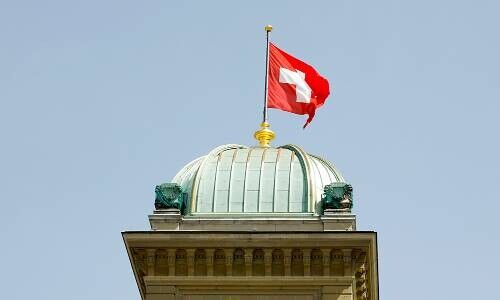Government and UBS Split Losses from CS Investment Bank
The guarantees for UBS in its takeover of Credit Suisse go deeper than it initially appeared, according to an investor presentation UBS held late Sunday night.
A day the UBS Chairman hoped would never happen came to pass, Colm Kelleher told analysts and investors late Sunday evening. Earlier, he attended a media conference in Bern on the takeover of rival Credit Suisse. The content of the late-night presentation was made available to finews.asia.
Didn't Seek Merger
If Kelleher had emphasized the positive aspects of the transaction for his bank to the Bern audience, he was much more critical in his assessment of the origins of the merger to financial professionals. The Wall Street veteran stressed UBS was pushed into the deal by regulators around the world and that it did not itself seek the deal.
The investor call, in which CEO Ralph Hamers and chief financial officer Sarah Youngwood also took part, was the first time negative implications for UBS were discussed. As a result, UBS decided to temporarily pause its stock buybacks, although it still intends to stick to its policy of increasing cash dividends with the proposed dividend for last year being paid out as planned.
Six Billion Dollars of Savings
Hamers said the acquisition of Credit Suisse will lead to increased costs for UBS and return on equity will be pressured in the short- to medium-term. By 2027, UBS expects earnings per share to increase and cost savings to exceed eight billion dollars per year. Six billion is expected to come from savings in personnel, and two billion dollars in IT.
He was positive about the economies of scale expected in the core business with wealth management, private banking, and asset management. UBS expects to generate additional asset-gathering power on its investment platform and intends to pursue growth in the US and Asia as planned. Credit Suisse's clientele in Asia, Latin America, and the Middle East is seen as complementary to UBS's.
A Dominant Force
With $3.4 trillion of invested assets, the combined global wealth management business will become the industry's number two. UBS Asset Management becomes the third-largest European fund provider with $1.5 trillion.
In its home market, the combined entity will dominate Swiss retail banking by a wide margin, with loans of 307 billion francs and deposits of 333 billion francs, according to UBS.
The combined investment banking operations are to be kept in check and account for no more than 25 percent of risk-weighted assets on UBS's balance sheet. To ensure this, UBS plans to hive off Credit Suisse trading to a separate unit from its core business and wind it down.
Downside Risk Protection
The transaction offers compelling strategic opportunities as well as attractive financial terms, but there are also downside risks. Hamers and Kelleher said they will do everything they can to protect UBS shareholders' interests and provide stability. The risks will be protected by hedges.
As can be seen from the investor call and yesterday's UBS press release, the guarantees go beyond the measures initially mentioned by the Federal Department of Finance (FDF).
The FDF stated on Sunday that to enable the takeover, the Swiss government will assume a maximum loss guarantee of nine billion francs on a delimited part of the portfolio in the event of actual incurred portfolio losses. In such a case, UBS assumes the first five billion francs, and the government the next nine billion. Above that, UBS was on the hook for the additional losses, according to the Finance Ministry.
25 Billion Cushion
However, Hamers told investors the hedge against losses above the nine billion assumed by the government would be split 50:50 between the state and UBS.
UBS expects the takeover to result in overall downside protection of around 25 billion francs comprising the nine billion government guarantee, and 15.8 billion from Credit Suisse's mandatory convertible bonds (AT1), which the Swiss Financial Market Supervisory Authority (Finma) triggered on Sunday. According to UBS, there is a 50 percent hedge against the risk of loss with the Credit Suisse trading division, which UBS wants to wind down.
Taken together it amounts to a 50:50 of hedging and direct risk for UBS.
Shared Burdens
But according to the FDF, the calculation is not entirely precise. The federal government agreed with UBS to examine any further losses, as well as any profits, via a profit-loss-share agreement if the accumulated losses exceed 14 billion francs. The FDF said this does not mean the government has committed itself indefinitely. The federal government had applied for and received a commitment credit of nine billion francs and is not allowed to enter into more commitments.
For UBS shareholders, this makes the transaction, for which they must temporarily forgo capital compression and return on equity, seem somewhat less threatening. For the federal government, which wanted to avoid a state bailout of Credit Suisse at all costs, the far-reaching guarantees will probably lead to an additional need for explanation.




























